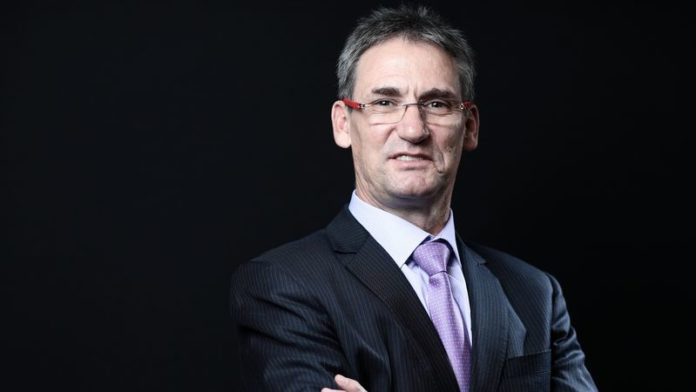
GOLD Fields CEO, Chris Griffith, dropped a major clue regarding the firm’s plans for South Deep in South Africa after he today praised the “… general direction of travel” of the mine.
The Johannesburg-headquartered group has lost billions of rands on South Deep having bought it for R22bn from Barrick Gold in 2006. At the time of the deal, Gold Fields’ CFO was Nick Holland who later went on to become the firm’s CEO for 13 years.
It has been suggested that Holland’s loyalty to the transaction led him to keep faith with several installments of re-engineering at South Deep, culminating in a major restructuring in 2018. Soon after the restructure, however, the mine started to produce improved numbers which coincided with a record rand gold price.
The appointment of Griffith, however, could mark a change of opinion on South Deep. Speaking at his first quarterly presentation, Griffith said he hadn’t formed an opinion but for now South Deep seemed to have turned the corner.
“I say it with a health warning … but the general feel I get is that the company has got a better handle on the orebody. I’m not saying we won’t amend it, but there has been a lot of evolution, of blood, sweat and tears that’s gone into a better mining method,” he said.
“It’s starting to look like a mine.”
Gold Fields earlier downgraded production guidance at its South Deep mine in South Africa and its Peru mine, Cerro Corona owing to Covid-19 related disruptions in the first quarter.
Production at South Deep will come in about 9,300 ounces lower at 280,000 oz for the firm’s 2021 financial year. The mine would also have higher capital expenditure than planned as a result of approval to build a proposed R660m solar plant of which R318m will be incurred in the current financial year.
The outcome would be an increase in sustaining capital at South Deep to R1.22bn from guidance of R889m. All-in sustaining costs would be R672,000/kg compared to its original guidance of R620,000/kg.
Gold production at Cerro Corona is expected to be 20,000 oz lower at 110,000 oz, although copper production would remain at similar levels.
On the bright side, the higher copper price had “… more than offset this impact on a gold equivalent ounce basis. Consequently, group guidance remains intact,” the company said. Gold Fields has guided to 2.3 million to 2.35 million gold equivalent production for 2021 and AISC of $1,020/oz and $1,060/oz.
Group attributable equivalent gold production in the first quarter was 541,000 oz, largely flat year-on-year and down 9% quarter-on-quarter.
Commenting on Gold Fields broadly, Griffith said the group was in good shape. “The deliberate strategy of moving away from labour-intensive, conventional mining to focus on mechanised open pit and underground operations, with majority international exposure, has served the company well,” he said.
During the period of Griffith’s appointment at Gold Fields, the company was the subject of merger and acquisition speculation involving Sibanye-Stillwater which said it wanted to increase its gold production through consolidation in order to rebalance its platinum group metal-heavy portfolio.
Said Griffith today of the merger talk: “It’s long been a discipline in the company not to comment on market speculation. We’ve seen the reports in the media … We will do things that are value-adding”.
Gold Fields quadrupled headline earnings to $729.3m (2019: $162.7m) in the year to December despite its results being negatively affected by realised losses from the group’s hedging policy through which it sold gold forward.








